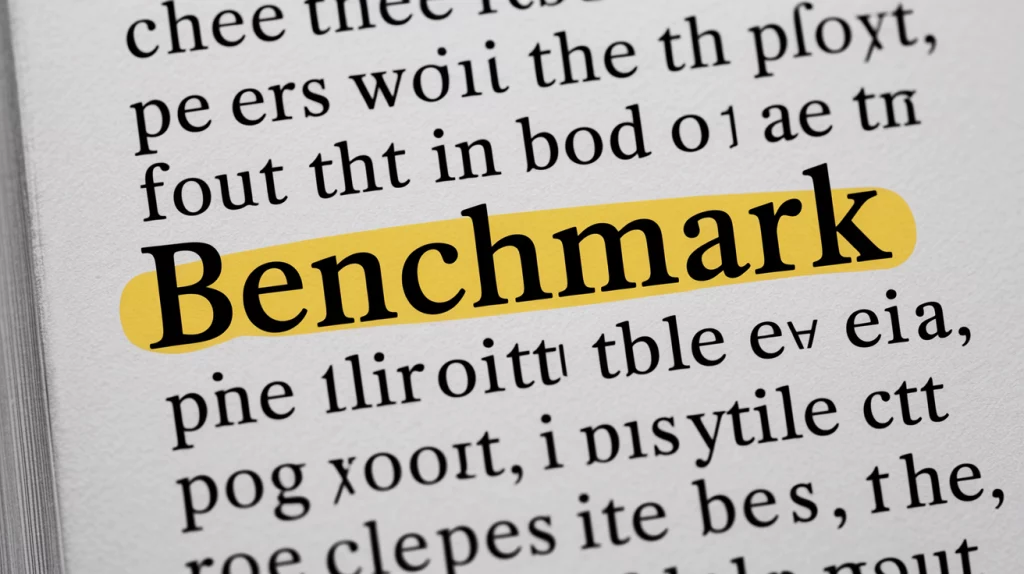What Is a Panel Interview
A panel interview is a structured selection meeting in which two or more representatives of the hiring organization interview a single candidate at the same time. Typical panel members include the direct supervisor, an HR partner, potential teammates, and cross-functional stakeholders. This panel interview format allows multiple decision-makers to evaluate the same evidence simultaneously, reducing scheduling bottlenecks and individual bias while giving the candidate a panoramic view of the company’s culture.
Panel interviews differ from group or team interviews: in a group interview several candidates face one or more interviewers, while in a team interview the candidate meets team members one-on-one or in quick succession. Because a panel interview consolidates perspectives in a single session, it is common in higher education, health care, government, and any role where the cost of a mis-hire is high.
Panel Interview Questions (Top 10)
Below is a curated list of ten high-value panel interview questions that hiring teams ask across industries. Together they test core competencies—leadership, collaboration, problem-solving, and culture fit—and give panelists space to probe from different angles. Adapt wording to your job description and apply a consistent scoring rubric. Ensure every question maps to a competency on your score sheet and that each panelist knows who will ask which question and who will probe follow-ups.
| # | Question | Why it works (for employers) | How to answer (for candidates) |
| 1 | “Walk us through the key achievements in your career that qualify you for this role.” | Establishes a common baseline all panelists can score and highlights direct, role-relevant value. | Use the STAR framework; pick 2-3 accomplishments that map to the job description and end with quantified results (revenue, time saved, quality metrics). |
| 2 | “How have you prepared yourself for this specific company and position?” | Reveals depth of research, genuine motivation, and cultural alignment. | Reference recent news, products, or values; link them to your skills and express why they matter to you personally. |
| 3 | “Describe a challenging problem you solved and the impact of your solution.” | Tests analytical thinking, resilience, and ability to deliver measurable outcomes. | Outline the challenge, your method, obstacles overcome, and finish with a data-backed impact statement (e.g., “cut ticket backlog 42 %”). |
| 4 | “Give an example of how you prioritized conflicting deadlines in a fast-paced environment.” | Assesses time-management, judgment under pressure, and stakeholder management. | Explain the decision framework you used (MoSCoW, Eisenhower Matrix), how you communicated trade-offs, and the final business benefit. |
| 5 | “Tell us about a time you influenced stakeholders outside your reporting line.” | Illuminates persuasion skills and cross-functional collaboration—critical when multiple panelists must later work with you. | Share how you identified stakeholder needs, built consensus, and secured commitment, ending with the project’s positive outcome. |
| 6 | “How do you adapt your communication style for audiences with differing technical backgrounds?” | Demonstrates versatility—panelists often hail from HR, finance, and technical teams. | Provide a scenario showing how you simplified jargon, used visuals, or switched mediums to ensure clarity and buy-in. |
| 7 | “What would you do if one of your ideas was rejected by your supervisor or team?” | Gauges humility, openness to feedback, and resilience—key to healthy team dynamics. | Acknowledge emotions briefly, describe how you’d seek understanding, refine the idea, or pivot, and emphasize continuous learning. |
| 8 | “How do you stay innovative in a role with strict regulatory constraints?” | Balances creativity with compliance—vital in finance, health care, or government roles. | Cite a compliance-bound project where you prototyped, consulted legal early, and still delivered a novel solution. |
| 9 | “What does success look like in the first 90 days for you in this position?” | Aligns expectations early and signals proactive planning. | Present a 30-60-90-day outline covering learning goals, quick wins, and relationship-building; tie each phase to business metrics. |
| 10 | “Why are you the best candidate for us, and why are we the best employer for you?” | Encourages a two-way value proposition and tests culture fit and long-term commitment. | Summarize your unique strengths, mirror them to company priorities, and articulate what you hope to gain and contribute over time. |
How to Prepare for a Panel Interview
1 Research every panelist. Use LinkedIn, press releases, or the company website blog to note titles and recent projects; this enables tailored questions and warmer rapport.
2 Practice concise storytelling. In panel settings answers must be crisp yet substantive—aim for two minutes, grounded in the STAR (Situation-Task-Action-Result) method.
3 Bring collateral. Carry one hard copy of your résumé for each panel member plus extras for unexpected attendees.theforage.com
4 Rehearse eye-contact choreography. Begin each answer with the questioner, then shift gaze to include everyone, signaling inclusivity.
5 Prepare clarifying questions. Panels appreciate candidates who engage each interviewer by name and speciality, demonstrating listening skills and curiosity.
6 Plan logistics. Know the interview room (or virtual platform), arrive early, test technology, and bring water; minor distractions are magnified in a group setting.
By integrating these steps into your personal panel interview preparation, you project poise and respect for every stakeholder.
How to Conduct a Panel Interview
Organizations that run effective panel interviews follow a disciplined playbook:
- Select and brief the panel (ideally three to five diverse members) on role requirements, competencies, and anti-bias reminders.
- Agree on the question sequence. Start broad, progress to technical, move into behavioral, and finish with candidate questions.
- Standardize evaluation. Use Likert, forced-ranking, or BARS scorecards and complete ratings immediately after each question before discussion to preserve independent judgment.
- Control logistics. For equity, hold every interview in the same room, with identical seating and video settings; limit panel talk-time to prevent one voice from dominating.
- Manage candidate experience. Inform candidates in advance about panel size, roles, and interview length; debrief them on next steps at the close.
Following these steps not only creates a defensible hiring record but also accelerates decisions and enhances employer branding.
What Are the Advantages and Disadvantages of Panel Interviews?
Advantages
- Speed and efficiency. Consolidates multiple rounds into one session, shortening time-to-hire.
- Balanced evaluation. Diverse panelists dilute individual bias and deliver a 360-degree view of the candidate’s fit.
- Consistent data. Asking standardized questions in a single sitting yields comparable evidence across applicants.
- Stronger predictive validity. Research links structured panel interviews to more accurate performance predictions than unstructured formats.VidCruiter
- Positive employer impression. Candidates gain insight into cross-department collaboration and company culture in real time.
Disadvantages
- Intimidation factor. Facing several interviewers can heighten anxiety, potentially obscuring a candidate’s true capability.
- Cognitive overload. Too many panelists or overlapping questions may distract both candidate and interviewers, reducing response quality.
- Logistical complexity. Coordinating calendars and training panelists in structured techniques demands upfront effort.
- Decision stalemates. Divergent opinions among panelists may prolong deliberations if no consensus process exists.
Mitigate downsides by limiting the panel to four people, briefing candidates early, and appointing a chair to facilitate flow.
What to Expect in a Panel Interview: Tips for Success
1. Acknowledge Your Emotions
Recognize nerves as normal physiological arousal—channel the energy into attentive listening and dynamic delivery. Breathing exercises before entering the room can reset your baseline.
2. Remember, This Is Your Career Decision, Too
A panel interview is reciprocal. Assess chemistry among panelists, observe how they interact, and ask targeted questions that reveal leadership style and values alignment.
3. Make Eye Contact With Each Panel Member
Rotate your gaze naturally so everyone feels engaged; this signals confidence and respects individual contributions. theforage.com
4. Set the Pace for the Entire Conversation
Answer succinctly, pause for follow-ups, and invite clarification. Your steady cadence helps panelists take notes and reduces cross-talk.
5. Prepare to Follow Up
Collect business cards, send individualized thank-you notes within 24 hours, and reference a specific topic discussed with each person to reinforce memorability.
How to Know if a Panel Interview Went Well
What Are the Signs of a Successful Panel Interview?
- Interview ran its full scheduled length—or longer. Extended time suggests genuine interest.
- Introductions to other employees or office tours. Impromptu meet-and-greets indicate the panel envisions you as part of the team.
- Detailed discussion of role scope, projects, or next steps. Panels rarely invest in specifics unless you are a strong contender.Indeed
- Positive body language. Frequent smiles, nodding, and open posture from multiple panelists show alignment with your answers.
- Mentions of advancement or long-term opportunities. Signals strategic fit beyond the immediate vacancy.
- Prompt follow-up instructions or scheduling of subsequent stages. Clear next steps often precede an offer.
While none of these signals guarantee an offer, the more that appear, the higher the probability your panel interview resonated.
Final Thought
Whether you are orchestrating or attending a panel interview, success hinges on structure, preparation, and empathetic communication. For employers, a well-designed panel interview format expedites hiring and enhances decision quality; for candidates, mastering panel dynamics turns a potentially intimidating scenario into an opportunity to showcase versatility before multiple influencers at once.


